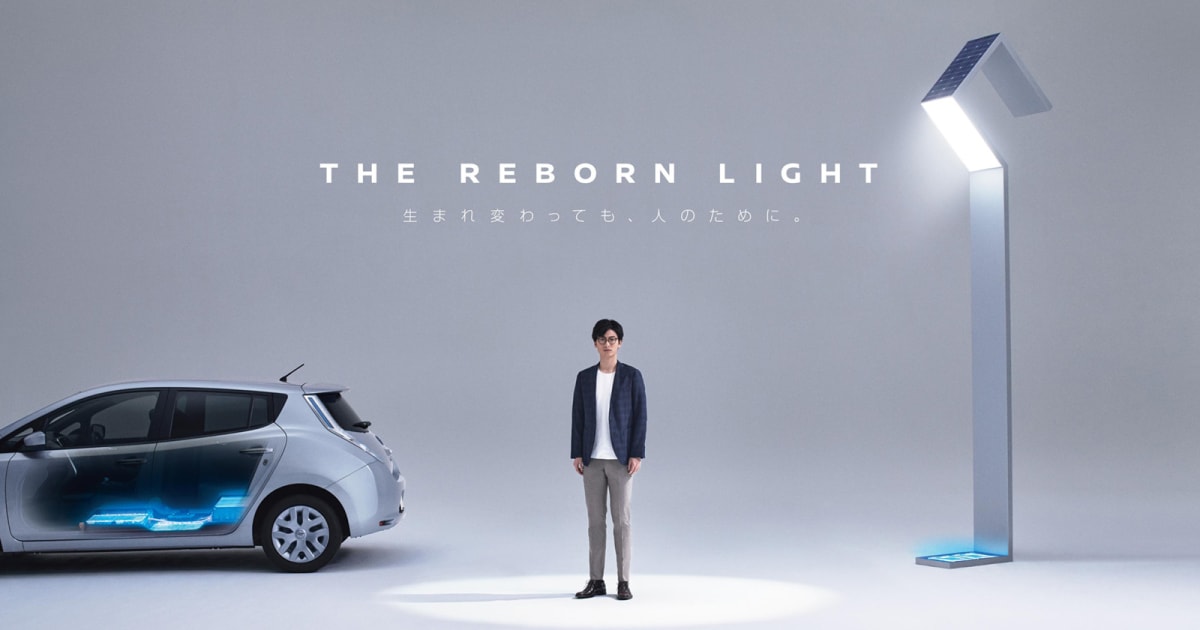Fire-Safe Lithium Batteries Move Closer to Markethttps://t.co/8kIBUkypQz
— leydenbattery (@leydenbattery) May 30, 2018
from Twitter https://twitter.com/leydenbattery
May 29, 2018 at 06:23PM

Where Battery Technology Begins!
Fire-Safe Lithium Batteries Move Closer to Markethttps://t.co/8kIBUkypQz
— leydenbattery (@leydenbattery) May 30, 2018
from Twitter https://twitter.com/leydenbattery
May 29, 2018 at 06:23PM
Fire-Safe Lithium Batteries Move Closer to Markethttps://t.co/8kIBUkypQz
— leydenbattery (@leydenbattery) May 30, 2018
from Twitter https://twitter.com/leydenbattery
May 29, 2018 at 06:23PM
Fire-Safe Lithium Batteries Move Closer to Markethttps://t.co/8kIBUkypQz
— leydenbattery (@leydenbattery) May 30, 2018
from Twitter https://twitter.com/leydenbattery
May 29, 2018 at 06:23PM
Nanostructured Electrolytes for Stabilizing Lithium Metal Anodes
https://ift.tt/2uofWo4
The addition of salt to block copolymers results in the spontaneous and surprising formation of well-ordered lamellae in a sample that originally had a disordered morphology.
The geometry of ion-conducting pathways (bright domains) is crucial for both prevention of dendrite formation at the lithium metal anode and for conducting ions between the battery electrodes.
DOI: 10.1021/acs.macromol.7b02415
Battery
sustainable-energy
via JCESR http://www.jcesr.org
March 28, 2018 at 03:05AM
Lithium-Oxygen Battery with Long Cycle Life in a Realistic Air Atmosphere
https://ift.tt/2pNhWkj
Advances in materials functionality for Li-O2 electrochemistry have resulted in a Li-O2 battery that is able to run under a realistic air atmosphere with a long cycle life.
The new Li-O2 cell architecture is a promising step toward engineering the next generation of lithium batteries with much higher specific energy density than lithium ion batteries.
Battery
sustainable-energy
via JCESR http://www.jcesr.org
March 27, 2018 at 09:01AM
Bentley is the latest luxury car maker committing to EVs
https://ift.tt/2G8pLfE

According to AutoBlog, Bentley is planning on using the same electric architecture as the Porche’s Mission E, making for a faster, stronger and farther-ranging automobile. “A full electric Bentley is something I am extremely convinced we have to do,” design director Stefan Seilaff told Auto Express. “It should be a four or five-seater and it should also have the possibility to carry a little bit of luggage, maybe not for five people.”
Battery
tech-reading
via Engadget http://www.engadget.com
March 26, 2018 at 01:03PM
Nissan is using recycled Leaf batteries to power street lights
https://ift.tt/2GqdiD7

Nissan has been testing the idea of used Leaf batteries for awhile with its Tesla Powerwall-like xStorage program. The idea of using the batteries in an off-grid streetlight, however, is new and appears to be just the start of Nissan’s new push into grid and off-grid storage.
Much like its alliance-mate Renault, Mercedes and others, Nissan also has a grand plan to use batteries from old and destroyed EVs in several ways. One is for residential homes and buildings that use solar or wind energy, storing energy and releasing it at night or if the power goes out. Another is to use the batteries for “smart booths” that could power cellphones and other devices. Finally, Nissan unveiled a whimsical scheme, “a park converting the bursting energy of children into electricity while they play. Children’s energy during the day keeps the park bright and safe at nighttime.”
Much like Renault’s “Smart Island,” Nissan’s Light Reborn project is more a small-scale test and way to market its green credentials. Namie, Japan, is a particularly poignant location for a test, as the nearby Fukushima nuclear plant lost power during an earthquake and tsunami, causing a partial meltdown of the core.
So far, only Tesla has truly made a big push into the consumer market with its Powerwall batteries and solar panels. By the time 2020 rolls around, however, and large companies like VW release mainstream EVs, the idea of recycling car batteries for the grid will be a lot more feasible — and necessary.
Battery
tech-reading
via Engadget http://www.engadget.com
March 26, 2018 at 02:39AM
Nissan targets sales of 1 million EVs annually by 2022
http://ift.tt/2ulJe79

Nissan is hoping to achieve a target of selling 1 million electrified vehicles across its portfolio by its fiscal 2022, the automaker announced today. The target is part of its overarching strategic mid-term plan leading up to 2022. To be included in the sales total, models sold by Nissan need to either be pure electric or e-POWER vehicles (Nissan’s hybrid system that delivers the performance benefits of a fully-electric powertrain with the range and refuelling benefits of an internal combustion engine).
The overall strategy to help get Nissan to that milestone also includes the release of eight new purely electric vehicle, to follow the LEAF, and a multi brand launch of EVs specific to China. There’s also a new electric mini-car coming to Japan, and a plan to electrify all new Infiniti vehicles by 2021.
Alongside its EV targets, Nissan is also looking to build out its autonomous driving portfolio, with specific goals to ramp up its ProPILOT advanced driver assistance system sales by 2022. Nissan says it’s also aiming to sell 1 million models per year equipped with ProPILOT (which is similar to Tesla’s Autopilot) by that time. ProPILOT should grow more capable, too, with automated multilane driving and destination picking hopefully rolling out in the next couple of years.
Battery
tech-reading
via TechCrunch https://techcrunch.com
March 23, 2018 at 05:55AM
Someone Go Find a Practical Use for This Sweet-Ass Conductive Plastic
https://ift.tt/2ueyasl

I’m not gonna lie. Sometimes I see a science paper and think, dang, that’s really cool, I really wish it could do X. Like, maybe a major advancement in flexible, transparent plastic conductors could solve all of my cracked smartphone screen problems. Of course, things are more complex than just that, and a single new material won’t solve my concrete-induced woes. But this latest research definitely conjures some intriguing possibilities.
“Conductive flexible plastics will open up a host of medical and display applications that we can’t currently imagine,” Brett Savoie, assistant professor of chemical engineering at Purdue, told Gizmodo. Combined with other breakthroughs, plastics that conduct electricity well could make for some wonderful gadgets.
Scientists have increasingly been exploring the field of “organic radical polymers,” which have strange electronic properties. These are molecules built from a single regular repeating unit, called a monomer. But their special electrical properties come from a dangly bit hanging off of each monomer that has an extra, unbound electron, called a free radical. This new polymer, poly(4-glycidyloxy-2,2,6,6-tetramethylpiperidine-1-oxyl), PTEO for short, is in the neighborhood of 10,000 times more conductive than its competition.
Building one of these conductive polymers requires precisely controlling each monomer. In this case, the conductivity comes about through annealing, or heating and slowly cooling the material. This presumably arranges the polymer in a way that allows the electrons to move from free radical to free radical along a little electric highway.
This isn’t the first transparent conductor, nor the first polymer conductor. But lots of the existing ones rely on a chemical called ITO, which incorporates the very expensive and brittle metal indium. The new PTEO is not the most conductive plastic, but it takes a lot less work to make than other varieties.
The research has other limitations—the conductivity only works on teeny, micrometer-scale distances.
As Professor Jodie Lutkenhaus from Texas A&M writes in a commentary for Science, “Although the conductivity is exceptionally high for this polymer type, wider application will require this conductivity to be sustained over a larger length scale.” She’d also like to see further analysis of the polymer’s structure to validate the author’s claims in their paper, also published in Science.
In order to be used in a flexible touchscreen, this material probably needs to be combined with another flexible piece, the same way that a transparent, inflexible sheet of glass covers the transparent, inflexible conductor in your iPhone.
The new conductive plastic is constructed from some pretty widely available parts. If the researchers could send the electrons through the conductors over longer distances, perhaps they could incorporate the material into batteries, flexible touch screens, or medical devices.
Maybe it’s spring fever, but I’m feeling optimistic that one day I’ll have an iPhone that, with the help of some neat chemistry, doesn’t crack in response to my own stupidity.
[Science]
Battery
tech-reading
via Gizmodo http://gizmodo.com
March 22, 2018 at 11:42AM
US Utilities Have Finally Realized Electric Cars May Save Them
http://ift.tt/2Ivpcdl
Pity the utility company. For decades, electricity demand just went up and up, as surely as the sun rose in the east. Power companies could plan ahead with confidence. No longer. From a report: This year, the Tennessee Valley Authority scrapped its 20-year projections through 2035, since it was clear they had drastically underestimated the extent to which renewable energy would depress demand for electricity from the grid. But there is a bright spot for utilities: electric vehicles (EV), which make up 1% of the US car market. For years, that market barely registered on utilities’ radar. As EVs find growing success, utilities are building charging infrastructure and arranging generous rebates. Pacific Gas and Electric, Southern California Edison, San Diego Gas & Electric, and New Jersey’s PSE&G have partnered with carmakers to offer thousands of dollars in rebates for BMW, Nissan, and other brands. Now utilities are asking Congress for help as they attempt to keep tapping into EV demand. A collection of 36 of the nation’s largest utilities wrote a letter (PDF) to congressional leadership on March 13, asking for a lift on the cap on EV tax credits. The signatories’ include California’s Pacific Gas & Electric, New York’s Consolidated Edison, the southeast’s Duke Energy Company, and others covering almost every state. At the moment, Americans who buy electric vehicles receive a $7,500 federal tax credit (along with some state incentives) for each vehicle.
Read more of this story at Slashdot.
Battery
tech-reading
via Slashdot https://slashdot.org/
March 16, 2018 at 07:01AM